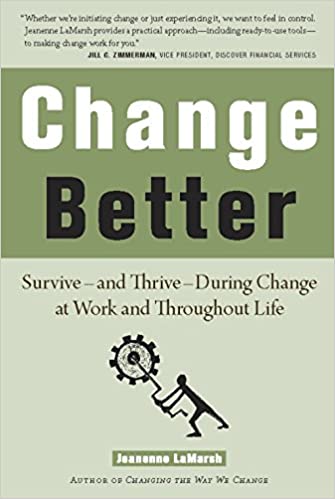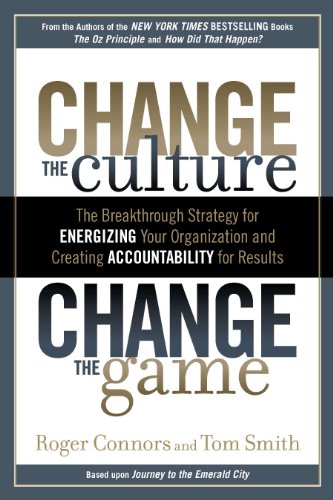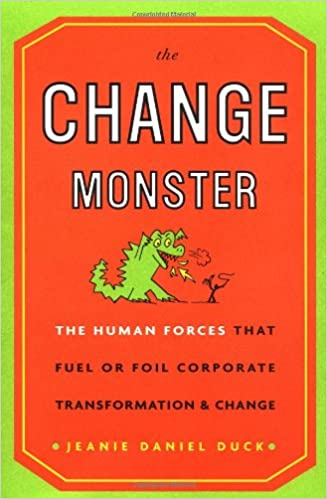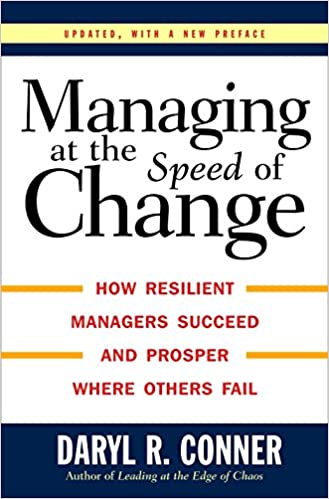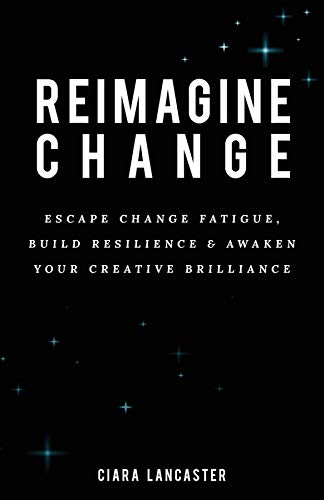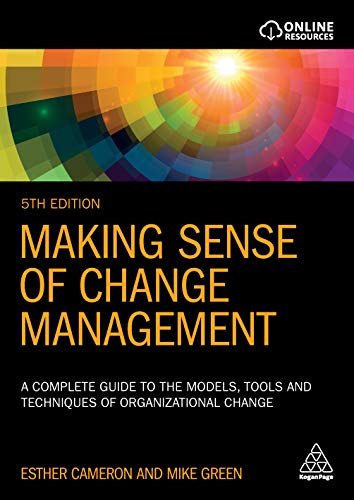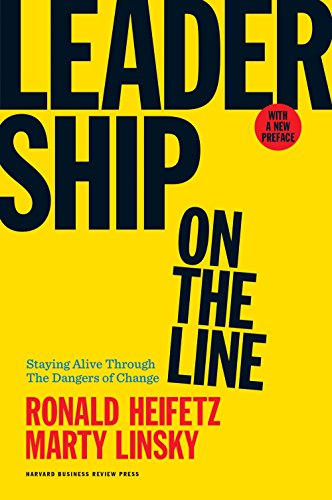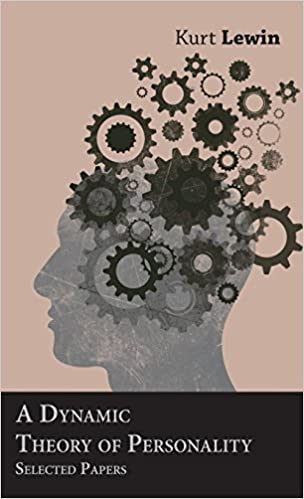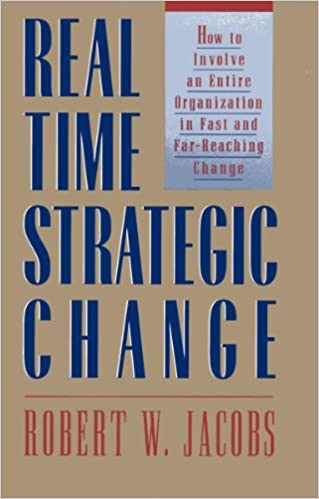Robert Bogue
December 4, 2020
2 Comments
It’s the early 1990s, and corporate cultures, and learning how to cope with increasing degrees of change, are becoming a thing. That’s when Managing at the Speed of Change: How Resilient Managers Succeed and Prosper Where Others Fail was first released. It’s a window in time to the leading edge of the change that we’re all now fully immersed in. Daryl Conner had been consulting and studying organizations and change for a few decades when the book came out, and he recorded his observations about how organizations change – and more importantly what derailed those changes.
Doing the Same Things
The premise then and now is that the same techniques we’ve used in the past to manage complexity and change no longer work. The explosion of media, communications, and virtual connectivity fundamentally rewrites the landscape of our human condition. Because of that, the typical approaches to command and control just don’t work any longer. (See Reinventing Organizations for another view about how organizations need to evolve to accommodate the changes we’re seeing in the world.)
The idea that we can, from on high, control things in the increasingly volatile, uncertain, complex, and ambiguous world we find ourselves in is ludicrous. (See Stealing Fire for more on VUCA.) The Soviet Union had fallen, because the central planning model of Lenin’s Marxist beliefs just couldn’t compete with the chaotic power of a free market system. While everyone likes the idea of control, we’re finding it increasingly harder to do. (See Compelled to Control for more on our need to control.)
Future Shock
We’ve entered into a time when we’re experiencing future shock. The changes are happening around us at a rate greater than our capacity to cope, and this is causing dysfunctional behaviors. Like a deer stuck in the headlights of an oncoming car, we’re frozen or worse, and with the current rate of change, there seems to be few or no recovery options. We get up every day only to be knocked down by a seemingly unrelenting tsunami of change.
This is particularly true as we continue to face the novel coronavirus and the COVID-19 that it causes. We’re adapting to new routines, new rules, and new approaches nearly daily. The weaknesses in our supply chain became apparent as we ran out of toilet paper, masks, and hair coloring. (See Antifragile and The Black Swan for more about how our tendency to optimize has made our supply chains more fragile than ever before.)
Dysfunctional Behavior
When Conner first wrote the book, he was concerned about the dysfunctional behavior he was seeing because of the future shock he believed we were experiencing as a society. The LA Riots were around this same time, and though he didn’t mention them by name, it’s clear that the level of civil unrest weighed heavily on his mind as he sought to reconcile the kinds of societal changes he was seeing in the face of constant change.
Understanding dysfunctional behavior isn’t easy. In Personality Types, the Enneagram model is explained – including the capacity for people to have both functional and dysfunctional behaviors within their primary operating models. The degree of change – and therefore the degree of future shock – caused Conner to speculate about the dysfunctional behaviors at a societal level.
I cannot imagine the vehemence of his words if they were written today, as we’ve seen so many dysfunctional behaviors that it makes the challenges of 30 years ago seem pale in comparison. We’ve seen riots and unrest on top of individuals attacking others for whether they are or aren’t wearing their masks.
Resilience
Like Pandora stuck in the box with all the horrors of the world, we find hope through the development of resilience in people. We find that, in these times – like those after the 9-11 attacks – people are coming together. So, while there is unrest there are also random acts of kindness as neighbors help other neighbors. Conner explains that resilience is “the capacity to absorb high levels of change while displaying minimal dysfunctional behavior.” Not only do some people absorb high levels of change and display minimal dysfunctional behavior, they also actively mitigate the dysfunctional behaviors by doing acts that are designed to reduce the impact.
Reactions to Change
The way that people respond to change is, in some sense, predictable. At another level, it’s largely unpredictable. If the change is perceived negatively, then the person will go through the stages of grief as described by Kubler-Ross in On Death and Dying. If the change is perceived positively, Conner asserts that there’s a different sequence of emotions: uninformed optimism, informed pessimism, hopeful realism, informed optimism, and completion – with the possibility of checking out as a part of the process. This process is similar to Gartner’s hype cycle, though Gartner doesn’t focus on how one might exit the process.
Bridges, in Managing Transitions, has a slightly different assertion. He asserts that, even when changes are perceived as positive, people still experience a sense of loss for the current way of doing things and will therefore follow an emotional cycle like the one Kubler-Ross describes. Bridges’ model doesn’t preclude the kind of unrealistic optimism that Conner describes. Similarly, Conner doesn’t prohibit the concept that someone might simultaneously think that the change is both positive and negative and therefore may be on both cycles simultaneously.
Intellectual Preparation and Emotional Readiness
Our reason can intellectually prepare us for events that we anticipate in the future, yet it can somehow not necessarily prepare us emotionally. When you’re aware that a loved one is on the slow decline to their death, it doesn’t change the emotional toll that their passing places on your heart. The simple fact is that no amount of intellectual preparation can prepare you emotionally. Emotions, it seems, operate with their own mechanisms.
It’s possible to communicate and prepare an organization for an impending change and still need to carefully address the emotions associated with the change. Whether the change includes the retirement of a beloved mascot or saying goodbye to facilities that are no longer appropriate for the organization, the emotions that are uncovered may be overwhelming at times.
Ignoring these emotions or pretending they do not exist should be done only at one’s peril. Not only is the change effort likely to not succeed, but one’s career is also likely to be negatively impacted.
Prediction Engines
More than anything, humans are prediction engines. We try to predict what will happen next to prepare ourselves for it. While we may not be able to change the circumstances, we find some solace in our ability to predict the outcomes – even the negative outcomes. Our brains are wired around prediction so completely that even laughter seems to be the result of a prediction gone wrong. It’s the error-checking routine in our head that focuses us on more accurately predicting what’s happening next. (See Inside Jokes for more.)
I was trained as a comedian. (See I am a Comedian.) The good news is that this helped me learn how to be funny and how humor works even when I’m not funny. However, it’s also made me very aware of the tricks that comedians use to get the audience to laugh – as a result, they don’t deceive me, and I don’t genuinely laugh. I can appreciate their application of the techniques, but in many ways, learning how to better predict comedy made comedy itself less amusing.
Laughter is the relief valve programmed in to allow us to find amusement at the failure to predict the outcome. It’s a way to recalibrate and prevent us from the anxiety of a failure to accurately predict the future. We’re so wired to doing this that nature needed a pressure relief valve. It’s also why people under extreme stress sometimes think that inappropriate things are funny.
The Need for Control
Our fundamental nature as a prediction engine leads us to a high need for control. We want to know that the predictions we make will come true, and the best way to do that is if we are in control of the outcomes. Of course, control is just an illusion, and therefore we have a great number of ways that we shield our egos from the truth about our minimal degree of influence or control over certain acts. (See Compelled to Control for more about our need to control and Change or Die for more about our ego’s defenses.)
We believe that our control of situations eliminates violations of our expectations and therefore keeps us safe. However, the more we believe in our predictions and the more certain we are about our safety, the greater our risk is of being proved wrong in spectacular ways.
The Nature of Change
While we view all change as the same thing, not all changes are the same. Some changes are trivial and incremental in nature, while others are transformative. The techniques that are optimized for incremental and continuous improvement aren’t designed to address the transformative kinds of change that shake our perceptions of the world. Some of the changes that we confront are mere inconveniences, while others may require radically rethinking our values.
While it’s convenient to refer to all change in one big bucket, choosing strategies for responding to change requires a more detailed understanding of the forces that are preventing the change and the reasons that can be harnessed to create the change.
Demystification of Patterns
Watching an airplane take off for the first time can be a powerful experience. There’s something magical about that moment when you see an aircraft lift itself off the ground with nothing – at least that’s what it seems like. There are forces working on the aircraft in a predictable way, but you’re unable to see or understand them until someone explains them to you. Bernoulli first discovered the impacts of air flow and differential pressures, which led to the creation of the airfoil, which generates lift. Once you know how these forces work, you may still revere our ability to create heavier-than-air flight, but it’s no longer mysterious, and it’s somehow a bit less scary.
The change in our organization is similar. The better that we can teach people to demystify the forces that surround the culture and the change, the less concern and fear will surround the moment. The heart of change management is to demystify the process to the point where fear has no place to hide.
Assimilation Points
The truth is that it’s practically impossible to eliminate fear in organizations. (See The Fearless Organization for more.) Instead you must settle for reducing fear to a manageable level so that everyone can continue to function. Everyone has a degree of fear that they’re capable of accepting before their behavior becomes dysfunctional. That degree of fear is driven by their assimilation points. Assimilation points are consumed for every change consumed. It’s the capacity for change and fear. The greater the change and the more potential for negative consequences, the more points are consumed. Once you’ve consumed more points than the person has, they begin their dysfunctional behavior.
Obviously, this leads to the need to manage how much change you ask of people. More than that, it calls for you to create situations where there’s a greater number of assimilation points available. This comes through providing opportunities for the person to strengthen their self-efficacy and therefore become less fearful of the changes.
Conner here speaks of assimilation points as if there’s a fixed cost for a given change and as if people have different capacities. In my observation, it’s not that people increase their capacity as much as the costs are lower for people who have greater levels of self-efficacy because of the reduced fear they experience.
The Economics of Change
One of the recurring themes in change management is the costs of staying the same must be higher than the costs of changing, whether this is expressed via the Beckhard and Harris Change Formula or more simply by saying the change was mandatory. The important point here is that Conner coined the term “burning platform” based on the 1988 disastrous explosion and fire on an oil-drilling platform in the North Sea off the coast of Scotland and the interview with survivor Andy Mochan, who jumped from certain death on the platform to possible death in the freezing waters below.
The idea of a “burning platform” has become a part of change lore. John Kotter’s first step is to create a sense of urgency, but he’s careful to discourage yelling “fire” about platforms that aren’t burning. If there’s truly a burning platform, then it’s appropriate to warn others; however, if you warn folks too early, you may become as irrelevant as the boy who cried wolf.
Climbing the Shallow Slope
While it’s possible to get people to flee certain death and take whatever measures necessary – no matter how risky – in most cases, our change efforts don’t involve a truly burning platform. Instead they’re motivators that push us forward towards change, but the degree of change that individuals are willing to risk is proportional to the risk they perceive of staying the same.
Thus, we end up in a situation where, if we ask big things from our users, we’re forced to ensure that the motivating factors are large. So, we can either invest energy in making the problem seem as big as possible, or we can spend time making the asks of people easier for them to do.
Here, Robert Cialdini’s work in Influence is a key accelerator. He explains that if you ask people for small but measurable commitments, they’re more likely to make bigger commitments in the future. When it comes to change, we want to make sure that the first changes we ask someone for are small enough to be perceived as reasonable. From there, we remove the barriers to the next step (see Demand) and continue to ask for progressively larger changes until we’ve achieved all the individual changes that are required for organizational change success.
Visible Commitment
The fact that these small commitments must be visible isn’t a small factor. Rogers in Diffusion of Innovations was clear that the ability for someone to observe that others are doing the behavior is key to winning over the majority. We can amplify the visibility of changes by celebrating the successes of the change. Enhanced visibility not only for the change that is desired but the results that are achieved.
This is why organizations do successful case studies. People want to know that others have been successful before they’re willing to make the change themselves.
Resisting Loss
It’s common to hear that the people in the organization are resistant to change. It’s become folklore that people resist change. The problem is that this isn’t true, as Bridges has pointed out. (See Managing Transitions.) People resist loss – not change overall. When you experience resistance in your change effort, the key question isn’t “Why can’t they just listen?” The key question is what loss are they mourning? (See On Death and Dying for more.)
A Stitch in Time Saves Nine – Pay for Commitment or Resistance
You don’t have to do the work to generate commitment any more than you need to put a stitch in torn clothing as soon as you notice the tear. You can choose to ignore the situation; however, if you do, you should be prepared to deal with the consequences. Whether it’s nine stiches or the resistance that will naturally ensue when people aren’t committed to the change, there will be a cost.
It’s a pay me now or pay me later situation that allows you to prepare folks so they don’t feel profound loss and instead are focused on the benefits that they’ll receive – or you can pay for the resistance that is generated when they focus on their loss.
Needing Each Other
With the exception of solo entrepreneurs, the truth is that everyone in the organization needs everyone else for the organization to continue to succeed and therefore stay employed. There are people in the organization whom you need to do their job so that you can do yours. Often in corporate life, it becomes one group against the other group – competing for whose approach is best or who is more important. However, in change, we need to rely on one another to accomplish the objectives rather than compete for scarce resources.
No ingredient is more important than another when making bread. Neither can an organization exist without its departments all functioning. Until the perspective is changed that everyone is there to support each other and the organization, it’s likely that the change effort will struggle.
Understanding Not Agreement
A key miss when developing this shared sense of mission and mutual need is the belief that we need to agree with everyone else in the organization. That’s not required. All that’s required is a degree of understanding of the others’ perspectives and the awareness that their perspectives are valid – even if they don’t match ours.
This key also supports us when we’re working on resolving conflicts inside the organization. Too frequently, we get caught by the fact that we don’t agree and fail to work towards understanding. (See Conflict: The Importance of Acceptance for more.)
Anti-victimization
When we feel as if others don’t understand us and they won’t listen to us, it’s easy to fall into the trap of victimhood. (See Hostage at the Table for more on victimhood.) We all visit victimhood from time to time. The trick is to learn not to buy a house there. The more that we can help everyone learn how to recognize their role in the change process, the less concerned that we need to be about people making an offer on the house. We feel like victims when we believe we have no power and no voice in the conversation. Giving everyone a voice reduces the tendencies towards victimization.
In the end, managing change may be about learning how to use the existing forces and perspectives to your advantage so you can do some Managing at the Speed of Change.
